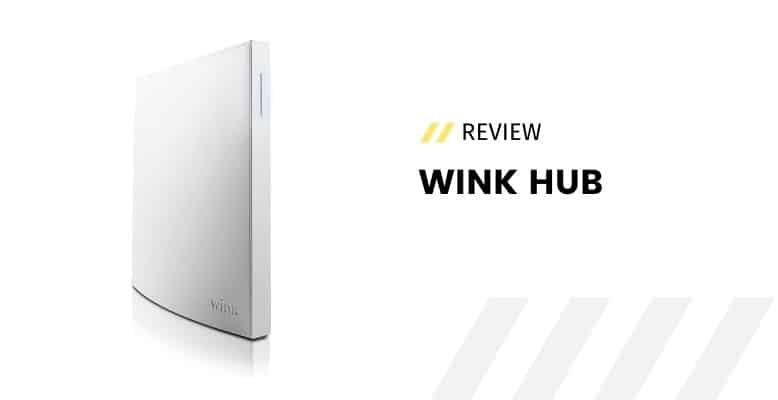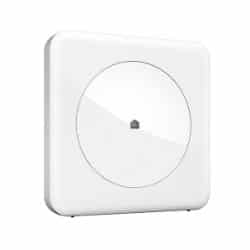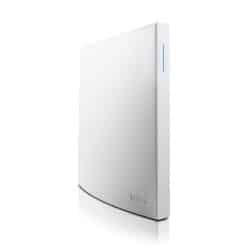If you’ve searched for smart home hubs, you might have heard the name, Wink. They released their first generation Wink Hub in 2014, and after two years, in 2016, they iterated this product and called it Wink Hub 2.
Many people are curious to know what the differences are between them. So in today’s article, we will review them and compare them head-to-head so you can make the right decision for yourself.

Here's what we cover:
Comparison Table
| Wink Hub | Wink Hub 2 | |
|---|---|---|
| Dimensions (W x H x L) | 3” x 8” x 8” | 1.25” x 7.25” x 7.25” |
| Connectivity | Wi-Fi, Bluetooth | Wi-Fi, Bluetooth LE, Ethernet |
| Supported Wi-Fi Bands | 2.4 GHz | 2.4 GHz, 5 GHz |
| Supported Protocols | Z-Wave, Zigbee, Lutron Clear Connect, Kidde | Z-Wave, Zigbee, Lutron Clear Connect, Kidde, Thread |
| Setup | Manual | Automatic + Guided |
| Memory | 64 MB | 512 MB |
| Maximum Number of Devices | 430 | 530 |
| Voice Assistants | Amazon Alexa, Google Assistant | Amazon Alexa, Google Assistant |
| Supported Third-party Products | Philips Hue, Sengled, Leviton, Lutron, Ring, Nest, Schlage, Yale, Honeywell, ecobee, etc. | Philips Hue, Sengled, Leviton, Lutron, Ring, Nest, Schlage, Yale, Honeywell, ecobee, etc. |
| Works without Internet | Yes (Basic) | Yes (Enhanced) |
| Check Price | Check Price |
Wink Hub (First-Gen.) Review
The original Wink Hub, or just simply Wink Hub 1, has Wi-Fi 2.4 GHz and Bluetooth as the primary medium of connectivity. It is compatible with Zigbee, Z-Wave, Clear Connect, and several other protocols. It can be controlled via voice assistants such as Amazon Alexa and Google Assistant.
The hub does not communicate with the app directly; instead, it goes to Wink Cloud and gets forwarded to the app. However, they have a backup technology called “Local Control” in case of an internet outage. Using this, you can control your devices from the app if your phone and the hub are on the same Wi-Fi network.
One difference in the first-generation hub is that the local control only has the basic functionalities. You can turn devices on/off, but the schedules and automation will not work without an internet connection.
Wink Hub supports a wide range of products. Products with a “Wink Compatible” or “Wink Hub Required” seal or simply any Zigbee or Z-Wave-based development should work beautifully with their system.
The Good
- Support for a great range of wireless protocols
- Pretty inexpensive compared to other home hubs
- Amazon Alexa and Google Assistant support
The Bad
- 2.4 GHz Wi-Fi band only
- Limited control without internet
- Subscription required
Wink Hub 2 Review
Wink Hub 2 got a sleeker design compared to the old one, and it is slim enough to be put in narrow spaces and bookshelves. They modernized their wireless connectivities with Bluetooth LE (Low Energy) and 5 GHz Wi-Fi band support. It is backward compatible with 2.4 GHz, so you don’t have to worry if you only have the old Wi-Fi band.
Protocol-wise, it remains precisely the same, but the difference can be felt if you use a 5 GHz network. Because 5 GHz works much faster and can accommodate more devices for simultaneous use. Previously, the connection between the hub and the Wi-Fi router was wireless. But now, it also supports a direct ethernet port connection.
There are a few more good improvements on the hardware side. The memory got bumped up to 512 MB from 64 MB. The setup process improved with automatic discovery of the hub followed by a guided interface.
The “Local Control,” the way they call it, got enhanced. Where Hub 1 can only do basic stuff like switching devices on/off without the internet, Hub 2 can also control home automation robots and schedules.
Third-party support for products stays the same way, and any Zigbee or Z-Wave product will work in their system. Some popular products that Wink officially announced as compatible are Philips Hue, Leviton, Lutron, Ring, Nest, Yale, etc. We reviewed Leviton Decora Smart recently, and they work pretty well with each other.
Is Wink Hub 3 Coming Out Anytime Soon?
There are numerous rumors about Wink Hub 3, and people have been waiting on another excellent iteration of this product. Is it actually coming?
I have been looking into Reddit on this matter, and a Redditor named jam905 posted his thoughts which made the most sense. According to him, after Wink’s former founder Nathan Smith left in 2017, they hired a new director of Hardware Engineering in 2019 to coordinate the engineering team again.
It is definitely questionable why it took them two years to fill in a replacement, but if everything goes right, we might see a Wink Hub 3 in 2024 or 2025, assuming it takes a few years for a new team to come out with a product in general. Anyway, this is my personal opinion, and it is not taken from any credible source.
Wink Hub Alternatives
There are probably dozens of alternatives for Wink Hub if you ask me. However, I really don’t want to confuse you by throwing 5 or 6 different options. If you want something directly replaceable with Wink Hub, it is the Samsung SmartThings Hub. And here is why:
First of all, and most importantly, SmartThings does not require a subscription to work. The support for different wireless protocols is a little less, but it covers Zigbee and Z-Wave products which are the most prominent ones in the market.
SmartThings have a better app interface as it comes from Samsung, which is already one of the tech leaders in terms of software experience. In theory, it supports up to 500 devices on one hub, which is more than sufficient for one home, but if you take advantage of automation further, you can use a much greater number of devices.
FAQ
What is Wink Hub?
Wink Hub is a mediator hub of different wireless protocols (Wi-Fi, Zigbee, Z-Wave, etc.) and offers its customers to control all of them in one place.
How to update Wink Hub?
If there is a new update available, it will pop up on the app screen. Or you turn on “Automatic Firmware Updates” in your app, which will take care of all future updates in the background.
Is Wink out of business?
Wink was acquired by i.am+ in 2017, and since then, the company decayed a lot and even had several downtimes. But it is not officially out of business.
When is Wink Hub 3 coming out?
There is no exact date when Wink Hub 3 is coming out, and it is not even known if it is ever coming out. But according to some Redditors, Wink has incorporated a new engineering team in 2019 to work on their next products.
Does Wink work without a subscription?
Wink works without a subscription, but the features will be drastically limited, and you will not be able to do any sort of cloud-based controlling.
Does Wink work without the internet?
Wink works without the internet with the help of their feature called “Local Control.” It is simply that when there is no internet connection, the hub will communicate directly with the devices instead of going through the cloud.
Does Wink work with Apple HomeKit?
Wink does not work directly with Apple HomeKit. However, you can make this work in several ways, for example, using a HomeBridge in between. We have explained this method in our guide here.
Conclusion: Is Wink Subscription a Dealbreaker?
In May 2020, Wink announced out of the blue that they had changed their business model, and now all their customers have to pay a monthly subscription fee to use Wink Cloud.
Suddenly introducing a fixed monthly fee is undoubtedly immoral for a product advertised as no subscription is required when selling.
Many other options on the market do not require subscriptions whatsoever. So what could be the one reason to stay with Wink? I honestly believe there is none unless you are already invested in their system. The best use case of this hub would be integrating different wireless protocols under one single hub. This is where Wink Hub shines the most, considering that you will pay a monthly fixed subscription fee.


